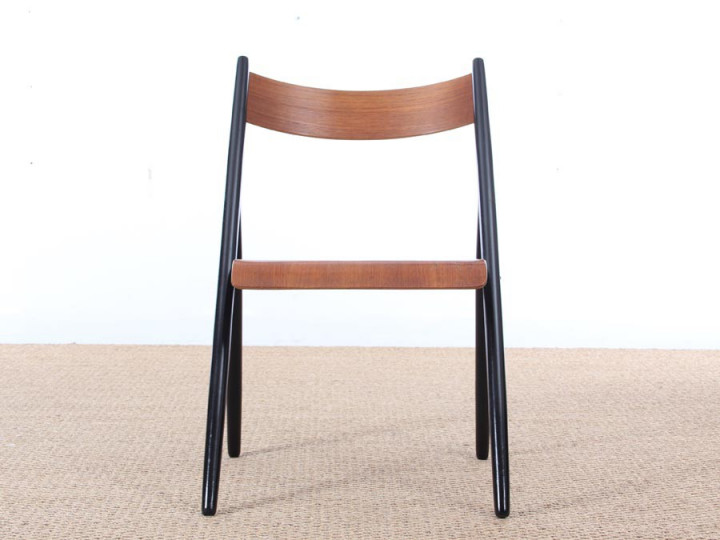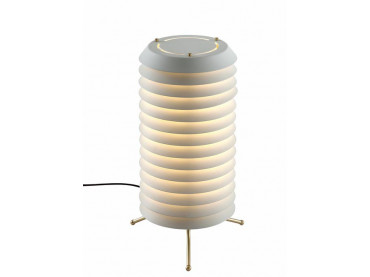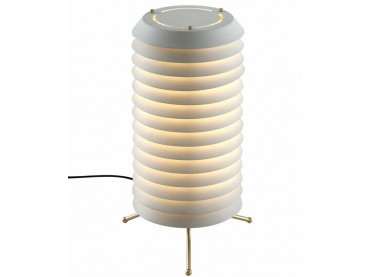| Year | 1960's |
| Condition | Excellent vintage condition |
| Dimensions | Total height : 74 cm. Seat height : 44 cm. Depth : 45 cm. Width : 50 cm. |
| Material | Black lacquered beech. Teak |
| Style | Classique Vintage |
| Origin | Finland |
Ilmari Tapiovaara
Yrjö Ilmari Tapiovaara (September 7, 1914 – January 31, 1999) was a Finnish designer noted for his furnishings and textiles. In 1937 he graduated in interior design and in the following year worked for Asko. He would count Alvar Aalto as a strong influence. In World War II, Tapiovaara designed dugouts and field furniture to the Finnish Army, a challenging task given that only local wood and simple tools could be used, and no nails or screws were available. His own work gained attention for the Domus chairs. These came about while working with his wife at the Domus Academica from 1946 to 1947. The couple established their own office in 1951. In the following year he taught design at the Illinois Institute of Technology. After this he would do work in Paraguay and Mauritius on behalf of a United Nations development program. Further in 1959 he received the Order of the Lion of Finland's "Pro-Finlandia medal."[1] He did much of his work for universities, schools, and also did a "Root Table" for the Finnish army.[2] Furniture designs based on his sketches continued to be produced into the twenty-first century. Source : wikipédia OU llmari Tapiovaara was one of the greatest interior architects and designers of his era. With the mind of anexplorer and a soul of a craftsman, Tapiovaara was always seeking for new solutions to improve everyday objects. During his long career Tapiovaara created dozens of iconic objects loved by the public.
Tapiovaara is especially revered as a master of characteristic and human objects and surroundings who captured the essence of Finnish identity. Today the contemporary Tapiovaara Family Collection maintains the timeless heritage of a master of Finnish design. Ilmari Tapiovaara graduated in 1937 as interior architect from the department of furniture design of the Central School of Applied Arts in Helsinki. After graduation he obtained the position of assistant for six months at Le Corbusier’s office in Paris. In 1938 Tapiovaara began work as artistic director and designer at Asko Oy, the largest furniture manufacturer in Finland, and in 1941 he was hired as artistic and commercial director for the furniture company Keravan Puuteollisuus Oy. In 1946–47 Tapiovaara designed, together with his wife, Annikki Tapiovaara, furniture for Domus Academica, the new student housing facility in Helsinki. It was in that project the famous Domus Stacking Chair was designed.
Ilmari Tapiovaara was a great admirer of Alvar Aalto’s work, and he wanted to create products based on the same ideological premises. Tapiovaara embraced the principle of social equality of functionalism, and felt that architecture was the starting point of his design work. In addition to dozens of chairs and other furniture, mostly intended for public spaces, Tapiovaara also designed interiors for many banks, offices, hotels and showrooms starting in the 1940s.
Ilmari Tapiovaara also worked abroad in various capacities. In 1952–53 he was employed as professor at the school of design of the Illinois Institute of Technology in Chicago, and he also worked for a while in the office of Mies van der Rohe. In the late 1950s, he travelled to Paraguay, where he designed furniture on behalf of the UN development programme, and in the mid-1970s he worked in Mauritius in a similar project. He also worked in an expert capacity in Yugoslavia, participating in the development of a centre for furniture and joinery industry. He also designed furniture for clients in Italy and Sweden, among others.
Ilmari Tapiovaara was awarded a total of six gold medals at the Milan Triennials in 1951, 1954, 1957, 1960 and 1964. He was awarded the Good Design Award in Chicago in 1951, the Pro Finlandia medal in 1959, the Finnish State Design Prize in 1971 and the Furniture Prize of the SIO Interior Architects’ Association of Finland in 1990.
source : artek.fi




















